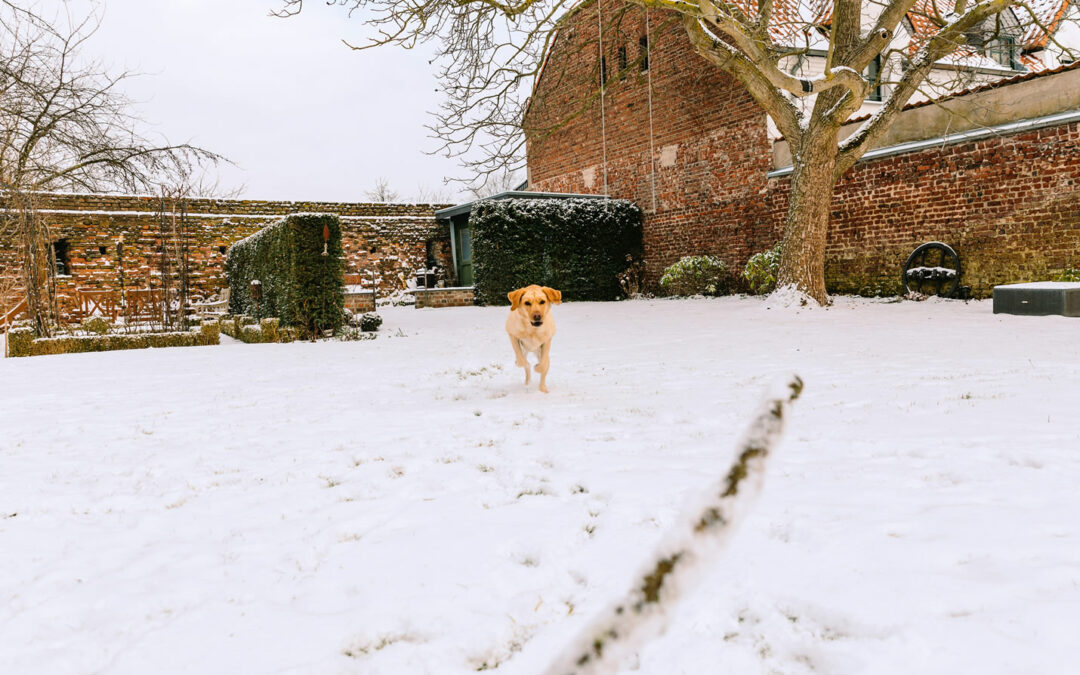The winter season brings several positive things to our doorsteps: calmness, a sense of peace, and the joyful expectation of the holiday season. At the same time, winter brings chilling winds and freezing temperatures that can wreak havoc on your once-thriving and bountiful garden. Knowing when to mulch can prevent your garden from ending up a disaster.
Unless you take proper measures to protect your yard, the harsh cold season can leave your garden bare even when spring comes around. Applying a protective layer over the soil is an effective and eco-friendly way to safeguard your garden plants.
Table of Contents
- What Is Mulch?
- Knowing When To Mulch for Best Results
- Benefits of Using Mulch in Winter
- How To Create Mulch
- How To Apply Winter Protective Mulch
- Best Tools for Mulching
- Wrapping Up: Winter Mulching
- FAQs
What Is Mulch?
Mulch is a layer of mixed materials placed on the surface of soil. The main purpose of mulching is to protect and insulate plants — perfect for giving them extra protection if winter temperatures are expected to drop very low.
Mulching commonly makes use of organic materials like leaves, grass clippings, tree bark, twigs, or straw. However, you can also use inorganic materials like rocks, stones, plastics, and geotextiles or landscape fabrics.
Knowing When To Mulch for Best Results
For winter protective mulching, the rule of thumb is to wait until a few freezes have already passed. This usually means around late fall or early winter — which is when the ground has already frozen over but the coldest, most freezing parts of the season have yet to come.
Wait for the first hard frost or when temperatures have dropped down to 25 degrees Fahrenheit and lower. Doing so allows the soil to cool down and the plants to adjust to the cold temperatures and prepare for the winter season.
However, take note that the timing for when to mulch may also vary depending on the climate where you live, the type of plants or soil you want to protect, and the type of material you are using.
Benefits of Applying Mulch in Winter
Many home gardeners are only aware of the benefits of mulching during spring. However, there are several advantages of winter mulching as well.
Some of these are:
- Protects the soil and plants from continual freezing and thaws
- Insulates the soil to protect germinating plants from the freeze
- Enriches the soil, making it more nutrient-rich
- Helps plants stay in a protective, dormant stage
- Locks in water and keeps the soil moist during the winter season
- Reduces weed germination and boosts weed suppression in spring
How To Apply Winter Protective Mulch
Mulching is a straightforward process, provided you have everything you need ready. Follow the steps and tips below for the best results.
- Prepare the soil. Start by clearing away any dead leaves, weeds, debris, and anything else on top of the soil. It’s also best to rake the surface of the soil to even it out and to water the soil before you start.
- Choose the right mulch. You can use either organic mulch, such as grass clippings and straw, or inorganic mulch, like gravel and cloth.
- Spread the mulch. Experts recommend applying a mulch layer that’s around five centimeters (two to three inches) thick for best results.
- Maintain proper coverage. Make sure the mulch is an even thickness and does not pile up around or against the stems and trunks of plants.
How To Create Mulch
Organic mulch is typically best to use, as the materials decompose naturally over time and add to the nutrients in the soil, improving the soil quality even more. Making your own organic mulch is recommended as a cost-effective and sustainable option.
Below are a few tips on how to create your own:
- Collect fallen leaves. Fallen leaves and debris during the fall season are ideal and convenient materials for winter mulching. After collecting them, store and let the leaves decompose until needed.
- Use lawn mower blades. This is a convenient way to create mulch as all you need to do is adjust your mower blade height or use a different set of mower blades to cut the grass into smaller pieces.
- Use your compost heap. If you practice composting, you can use well-rotted compost for mulching as well. If you are worried about the smell, you may want to cover the compost with dried straw or an inorganic fabric.
Best Tools for Mulching
When it comes to mulching, basic gardening tools are all you need. Some must-haves are your garden rake, shovel, and wheelbarrow. A mulch fork can also make the job much easier. However, when it comes to creating your own mulch, you need to be more discerning.
You need the right mower blades if you will be using grass clippings for winter mulching. Make sure to use mulching mower blades or 3-in-1 blades for the best results. As the name implies, these blades are designed to do three things: discharging, bagging, and mulching.
Mulching mower blades feature a curved design, with some also having extra cutting surfaces along the edge. This allows the blades to cut the grass more finely, making it perfect for mulching.
Other ideal mower blades for mulching are gator or toothed blades. High-lift blades are also recommended if you prefer bagging grass clippings.
Wrapping Up: Winter Mulching
Mulching is a simple yet very effective method for protecting your garden and plant beds during the winter season. With the right tools and by following the above guidelines, you can ensure your garden will be healthy, vibrant, and very much alive once the snow thaws and spring comes.
FAQs
What Mower Blade Should I Use for Mulching?
For effective mulching, it’s best to use mulching mower blades or 3-in-1 blades. Gator or toothed blades are a good alternative as well. These blades have extra cutting surfaces for chopping grass clippings into very fine pieces, which helps clippings decompose faster and enrich the soil with nutrients.
How Often Should I Mulch?
In general, it is good to practice at least once or twice a year. Aside from protective winter or late fall mulching, experts also recommend mulching in the spring. However, make sure not to do it too early. The best time for spring mulching is mid to late spring when the soil has fully thawed and warmed up.
How Do You Know When to Mulch?
The ideal time for winter mulching is after there have been a few freezes or after the ground has already frozen. However, do not apply mulch before the coldest time of the season has set in. The post-Thanksgiving season is usually a good time to mulch. During spring, make sure to wait until the middle of the season.

